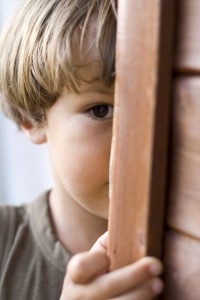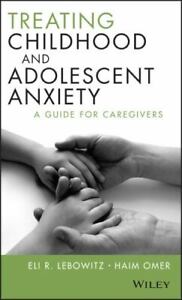It is common for children and teens to feel nervous or uncomfortable at times when going into new social situations and when meeting new people and trying new things. With time in the social setting, attempts at an activity or after a conversation or two, these nerves tend to pass. In Social Anxiety Disorder (also known as Social Phobia), the child’s primary fear is of negative evaluation by another person (adults or children).
Symptoms of Social Anxiety Disorder (SAD)
Children with social anxiety disorder are very conscious of what others think about them and frequently worry that others will judge them negatively and will reject or laugh at them. Children also fear that they will embarrass themselves by acting, performing or speaking in a way that provokes others to think poorly of them. For example, children often worry that others are watching or looking at them and perceive them as either unattractive, stupid, unkind, different, anxious or overly confident and unlikeable. As a result of these fears, children generally avoid going into social situations and engaging in interactions or activities that make them feel uncomfortable. This is because they feel or think they are being observed or judged and they feel they are the centre of attention.
Common situations that children with social anxiety disorder avoid:
- Having a conversation with adults or peers
- Meeting or playing with other children
- Going on playdates, to birthday parties or sleepovers. For teens this includes dating
- Going to childcare, preschool or school
- Eating or drinking in front of others
- Going to the toilet when others are around or waiting
- Speaking to authority figures (eg. Teachers, Principals, Doctors etc)
- Speaking or performing in front of others
- Completing school work or assessments
- Sitting tests or exams
When children with Social Anxiety are not able to avoid going into the social situation, the worry and distress is well above what would be expected for their age and developmental level. It often builds well before they enter the situation, remains while they are in the situation, and can remain for a period afterwards. Talking about the social situation or experience may also lead to anxiety and distress. The worry also remains and reoccurs despite warm-up periods and repeated experiences in the social setting, and despite others’ attempts to reassure them. Children appear to be very self-conscious and self-focused, often reporting they feel like the limelight is on them.
In Social Anxiety Disorder the persistent anxiety and distress can significantly impact on a child’s ability to engage in everyday activities and routines as well as perform developmental and academic tasks. It also impacts the development of friendships and other relationships and can make it challenging for teens to obtain or maintain employment. The excessive worry and distress is consistently present in one or more social settings for at least 6 months.
Common physical or other symptoms that occur for the child/teen when in an uncomfortable social situation or in the lead up to the situation include:
- Poor eye contact
- Flat facial expression
- Silence and non-responsiveness
- Tearfulness
- Headaches
- Stomach aches
- Nausea or vomiting
- Dizziness or fainting
- Muscle tension or body shaking
- Body ‘freezing’ or clinging
- Cramps or muscles aches
- Heart racing/palpitations and associated over-breathing, sweatiness, over-heating (e.g., hot flushes, red face/cheeks, clammy hands)
Treatment for Social Anxiety Disorder
Research has demonstrated that Behaviour Therapy and Cognitive Behaviour Therapy (CBT) are the most effective intervention models for Anxiety Disorders, including Social Anxiety. In some cases, pharmacological treatment (i.e., medication) can also be helpful in conjunction with a behavioural/CBT intervention (but this is not usually the first line of treatment).
These therapies will often include teaching strategies or techniques to the child and parent(s) such as:
- Education about anxiety in general, and social anxiety more specifically. Identifying triggers to the anxiety and factors which might be maintaining the child’s worries and fears is important.
- Emotion discussions: Learning to recognise anxiety and other emotions and talk openly about these feelings, up-skilling parents or caregivers to do this effectively through listening, validation and problem-solving.
- Behaviour management: Relaxation (e.g. deep breathing) and coping strategies; anticipating and planning how to manage future changes and transitions (i.e., predictability reduces anxiety); parenting in a consistent way; implementing routines; modelling coping behaviours; problem-solving; use of rewards and behaviour charts to encourage coping and brave behaviour.
- Thought challenging: helping children to become aware of unhelpful patterns of thinking that are leading to anxiety. Learning to think in a more helpful, less-anxious way.
- Exposure and response prevention: helping children gradually face their fears in a step by step approach which involves exposing them to situations and triggers which cause them to feel anxious. When small, realistic and achievable goals are set, children learn to sit with their anxiety and cope with it. They may also learn that their fears often do not come true or that they were not as bad as they had thought they were. Each step is practised frequently and consolidated before moving on to a more difficult step. The use of reward charts can be very helpful and involving children in choosing their goals and rewards is helpful for treatment and their motivation and responsibility.
If you would like to find out more about our treatment for Social Anxiety Disorder (Social Phobia), or to book an appointment with one of our child clinical psychologists who provides treatment for this condition, please email or call the clinic on 02 9438 2511.


